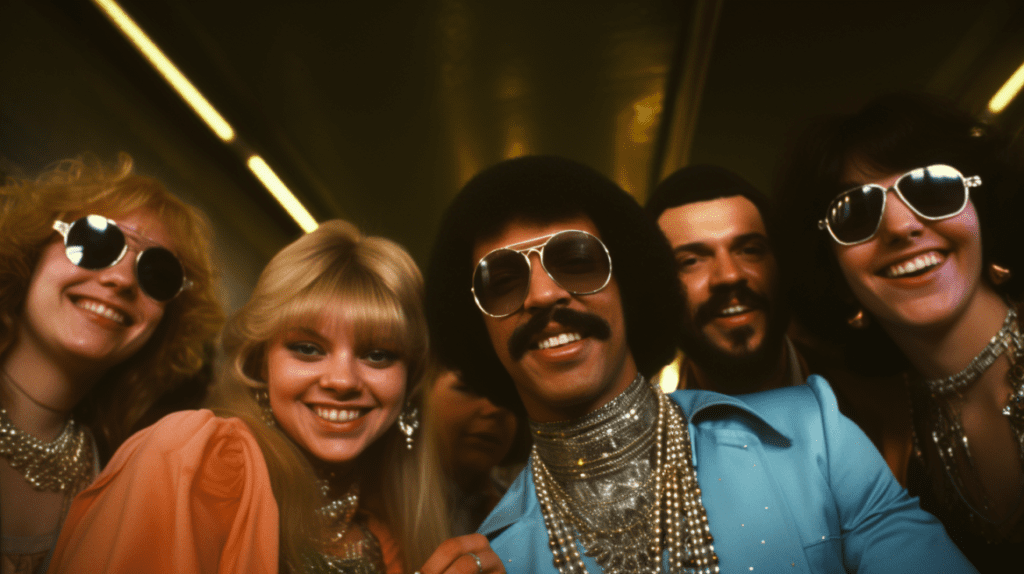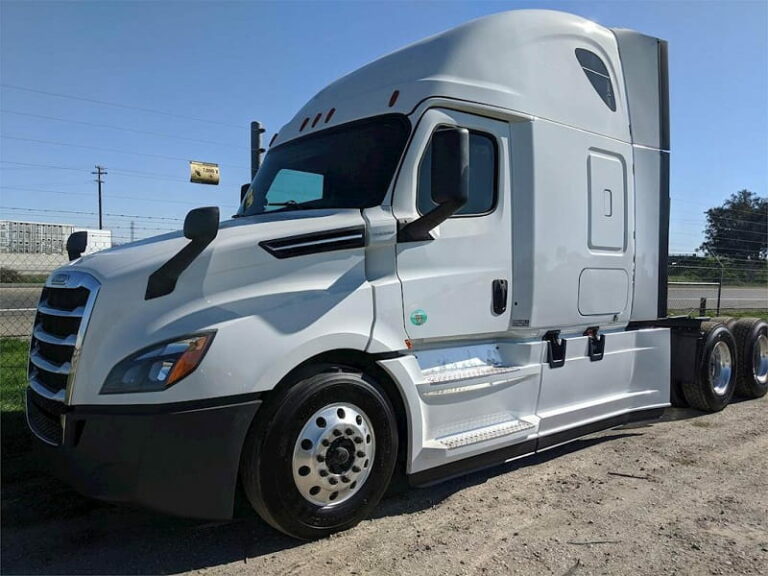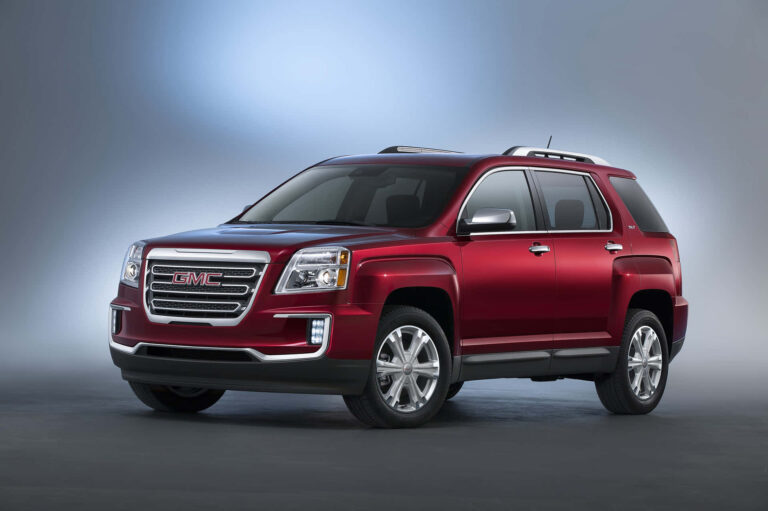1970s Chevy Trucks For Sale: A Comprehensive Guide to Finding Your Classic Square Body
1970s Chevy Trucks For Sale: A Comprehensive Guide to Finding Your Classic Square Body cars.truckstrend.com
The roar of a V8 engine, the unmistakable lines of a rugged yet stylish body, and the sheer nostalgia they evoke – 1970s Chevy trucks hold a special place in the hearts of automotive enthusiasts and collectors alike. More than just vehicles, these "Square Body" Chevys represent an era of American manufacturing prowess, durability, and a simpler time. Today, the market for 1970s Chevy trucks for sale is vibrant, offering everything from meticulously restored showpieces to raw project vehicles waiting for a new lease on life. This comprehensive guide will navigate you through the exciting journey of acquiring one of these iconic machines, exploring their enduring appeal, what to look for, where to find them, and what to expect along the way.
The Enduring Appeal of the "Square Body": A Legacy of Durability and Style
1970s Chevy Trucks For Sale: A Comprehensive Guide to Finding Your Classic Square Body
When we talk about 1970s Chevy trucks, we’re primarily referring to the third-generation C/K series, produced from 1973 to 1987. Within this timeframe, the trucks built between 1973 and 1979 truly define the ’70s aesthetic. Nicknamed "Square Bodies" for their more angular, boxy design compared to their predecessors, these trucks broke away from the smoother lines of the past, ushering in a new era of utility and modern styling.
Their appeal stems from several key factors:
- Robust Construction: Built on sturdy ladder frames, these trucks were designed to be workhorses. Their robust chassis and drivetrain components ensured longevity, making them incredibly durable.
- Timeless Design: The clean, utilitarian lines of the Square Body have aged gracefully, achieving a classic status that continues to turn heads. They strike a perfect balance between ruggedness and understated cool.
- Versatility: From basic farm trucks to luxurious Silverado trims, the C/K series offered a wide range of configurations. This versatility means they can be adapted for almost any purpose today – a daily driver, an off-road beast, a show truck, or a dedicated tow rig.
- Mechanical Simplicity: For the most part, 1970s Chevy trucks are mechanically straightforward. This makes them relatively easy to work on for the average DIY enthusiast, with parts generally plentiful and affordable.
- Nostalgia and Pop Culture: These trucks are deeply embedded in American culture, appearing in countless movies, TV shows, and music videos, cementing their status as an icon of the era.
.jpg)
Whether you’re seeking a piece of automotive history, a reliable classic, or a blank canvas for customization, a 1970s Chevy truck offers a compelling proposition that transcends mere transportation.
Understanding the Different Models and Trims
Before you start your search for 1970s Chevy trucks for sale, it’s crucial to understand the various models, body styles, and trim levels that were available. This knowledge will help you narrow down your search and identify the perfect truck for your needs.
-
C-Series (2WD) vs. K-Series (4WD):
- C-Series: Denotes a two-wheel-drive truck. These are generally lighter, more fuel-efficient, and often preferred for street-oriented builds or daily driving where off-road capability isn’t a priority.
- K-Series: Indicates a four-wheel-drive truck, designed for off-road adventures, hauling in rough terrain, or navigating snowy conditions. K5 Blazers and K10 pickups are prime examples.

-
Weight Classes:
- 10 (e.g., C10, K10): Half-ton trucks, most common for personal use, generally offering a smoother ride.
- 20 (e.g., C20, K20): Three-quarter-ton trucks, built for heavier hauling and towing, with stronger suspensions.
- 30 (e.g., C30, K30): One-ton trucks, the heaviest duty, often seen as dually pickups or chassis cabs for commercial applications.
-
Body Styles:
- Standard Cab Pickups: Available in short bed (typically 6.5 ft) and long bed (8 ft) configurations. Short bed C10s are particularly popular for their sporty appearance.
- Crew Cab Pickups: Less common but highly sought after, offering four doors and seating for up to six, typically with an 8 ft bed.
- K5 Blazer: A two-door, short-wheelbase SUV, initially offered with a full removable hardtop, later transitioning to a partial removable roof. Highly popular for off-roading and cruising.
- Suburban: Chevrolet’s original SUV, available in C and K versions, offering three rows of seating and significant cargo space. An excellent choice for families or those needing serious utility.
-
Trim Levels: These determined the level of interior comfort, exterior brightwork, and standard features.
- Custom Deluxe: The base model, often with minimal chrome and basic interiors.
- Scottsdale: A step up, offering more comfort features and trim.
- Cheyenne: A popular mid-range trim with more interior amenities, chrome bumpers, and often two-tone paint options.
- Silverado: The top-tier trim, featuring luxurious interiors (velour seats, woodgrain accents), full chrome trim, and often power accessories.
-
Engine Options: A wide array of gasoline engines were available:
- Inline-Sixes: 250 ci, 292 ci – known for durability and fuel efficiency, though less common today.
- Small-Block V8s: 305 ci, 350 ci, 400 ci – the most prevalent, offering a good balance of power and reliability. The 350 V8 is particularly ubiquitous and easy to maintain/upgrade.
- Big-Block V8s: 454 ci – offered in heavier-duty models, providing immense torque for towing.
- Transmissions: Manual options (3-speed, 4-speed) and automatic transmissions (Turbo 350, Turbo 400) were available.

Understanding these distinctions will empower you to identify the specific 1970s Chevy truck that aligns with your vision and budget.
Where to Find Your Dream 1970s Chevy Truck
The search for a classic truck can be as enjoyable as owning one. Thanks to the internet, finding 1970s Chevy trucks for sale is easier than ever, though local connections still play a vital role.
-
Online Marketplaces:
- Dedicated Classic Car Sites: Websites like ClassicCars.com, Hemmings.com, and Bring a Trailer often feature higher-quality or more unique examples, sometimes with detailed descriptions and extensive photo galleries.
- General Classifieds: Craigslist and Facebook Marketplace are excellent for finding local, often more affordable "project" trucks or daily drivers. Be prepared for less detailed listings and the need for quick action.
- eBay Motors: A global marketplace offering a wide range of conditions and prices, often with bidding wars.
- Specialty Forums & Groups: Many online forums and Facebook groups dedicated to Square Body trucks have "for sale" sections where enthusiasts list their vehicles.
-
Auctions:
- Live Auctions: Events like Mecum Auctions and Barrett-Jackson frequently feature well-restored or highly original 1970s Chevy trucks. These can be exciting but require quick decision-making and often yield higher prices.
- Online Auctions: Many auction houses now offer online bidding, expanding your reach.
-
Dealerships & Brokers: Classic car dealerships often specialize in vintage trucks. While prices might be higher due to overhead and markup, you often benefit from professional inspections, potential warranties, and financing options.
-
Word of Mouth & Local Searches: Attend local car shows, join classic truck clubs, and spread the word among friends and mechanics. Sometimes, the best deals are found through personal connections or by spotting a "for sale" sign on the side of the road.
Tips for Searching: Be specific with your search terms (e.g., "1977 C10 short bed," "K5 Blazer for sale"). Set up email alerts on various platforms to be notified when new listings match your criteria.
What to Look For: A Buyer’s Checklist for 1970s Chevy Trucks
Buying a classic vehicle requires a different approach than buying a modern one. Rust, deferred maintenance, and past modifications are common concerns. A thorough inspection is paramount.
-
Rust: The absolute biggest enemy of these trucks. Inspect thoroughly:
- Cab: Rocker panels, cab corners, floor pans (under the carpet/mat), door bottoms, firewall.
- Bed: Bed floor, inner and outer wheel wells, bed supports, tailgate.
- Frame: Inspect the entire frame for cracks, bends, or significant corrosion, especially around suspension mounting points.
- Fenders/Hood: Wheel arches, cowl, inner fenders.
- Windshield/Rear Window Seals: Check for leaks that lead to interior rust.
-
Engine & Drivetrain:
- Start-Up: Listen for unusual noises (knocks, ticks, rattles), excessive smoke from the exhaust (blue for oil, black for rich fuel, white for coolant).
- Leaks: Check for oil, transmission fluid, coolant, power steering fluid leaks.
- Test Drive: Does the engine run smoothly under acceleration? Does the transmission shift cleanly and without hesitation? Check for unusual vibrations.
- 4WD (if applicable): Engage 4WD (high and low) and ensure it functions correctly without grinding or binding.
-
Suspension & Steering:
- Look for worn ball joints, tie rods, and bushings.
- Check shock absorbers for leaks.
- Feel for excessive play in the steering wheel.
-
Brakes: Check fluid levels, pedal feel (spongy?), and listen for grinding noises. Test the parking brake.
-
Electrical System: Test all lights (headlights, tail lights, turn signals, brake lights), gauges, horn, wipers, heater/AC, and radio. Wiring can degrade over time, leading to gremlins.
-
Interior:
- Seats: Check for tears, rips, and proper support.
- Dashboard: Look for cracks, especially around the speaker grilles.
- Headliner & Door Panels: Condition indicates overall care.
- Glass & Seals: Check for cracks in windows and condition of weatherstripping.
-
Documentation: Request the title, service records, and any documentation of past repairs or restoration work. A clear title is essential.
Practical Advice: If you’re not mechanically inclined, always arrange for a pre-purchase inspection by a trusted mechanic who specializes in classic vehicles or has experience with these specific trucks.
Pricing and Valuation: What to Expect
The price of a 1970s Chevy truck for sale can vary wildly, depending on a multitude of factors. It’s not uncommon to see prices ranging from a few thousand dollars for a rough project to over $100,000 for a professionally restored, show-quality example.
Factors Influencing Price:
- Condition: This is the most significant factor.
- Project: Needs extensive work, significant rust, non-running. (Lowest price)
- Driver: Runs and drives, but needs cosmetic and/or mechanical attention. (Mid-range)
- Good Driver/Survivor: Well-maintained, mostly original, minimal issues. (Higher mid-range)
- Restored: Professionally rebuilt, show-quality paint, interior, and drivetrain. (Highest price)
- Model & Rarity: K5 Blazers, Crew Cabs, and short-bed C10s generally command higher prices than long-bed C20s or basic Custom Deluxe models. Big block trucks (454) can also fetch a premium.
- Originality vs. Modified: Highly original, well-preserved examples can be valuable. Professionally executed, desirable modifications (e.g., LS swap, custom suspension) can also increase value, but poorly done mods can decrease it.
- Mileage: Lower mileage (if verifiable) can add value.
- Location: Prices can vary regionally based on climate (less rust in dry climates) and local demand.
Estimated Price Ranges (Highly Variable, for illustrative purposes only):
| Model Type | Condition: Project (Running) | Condition: Good Driver (Usable) | Condition: Restored/Show Quality |
|---|---|---|---|
| C10 Short Bed (2WD) | $5,000 – $15,000 | $15,000 – $35,000 | $40,000 – $100,000+ |
| C10 Long Bed (2WD) | $3,000 – $10,000 | $10,000 – $25,000 | $30,000 – $70,000+ |
| K10 Pickup (4WD) | $6,000 – $18,000 | $18,000 – $40,000 | $45,000 – $100,000+ |
| K5 Blazer (4WD) | $8,000 – $25,000 | $25,000 – $60,000 | $65,000 – $120,000+ |
| Suburban (C/K) | $4,000 – $12,000 | $12,000 – $30,000 | $35,000 – $80,000+ |
| C20/C30 Heavy Duty | $2,000 – $8,000 | $8,000 – $20,000 | $25,000 – $50,000+ |
Note: These are rough estimates and can fluctuate significantly based on specific year, engine, options, market demand, and quality of restoration/maintenance.
Restoration vs. Driver vs. Project: Choosing Your Path
Once you’ve decided on a 1970s Chevy truck, you’ll need to decide what level of commitment you’re ready for.
- Fully Restored: Buy it, drive it, show it. These are the most expensive upfront but require the least immediate work. Ideal for those who want a turn-key classic or don’t have the time/skills for restoration.
- Good Driver/Survivor: This is a popular sweet spot. The truck runs reliably, looks presentable, and can be enjoyed immediately. You might tackle minor repairs or upgrades as you go, spreading out costs and effort.
- Project Truck: The most affordable entry point, but be prepared for significant time, money, and effort. This path is for enthusiasts with mechanical skills, a dedicated workspace, and a realistic budget for parts and professional services (e.g., paint, bodywork). It offers the ultimate customization potential but can quickly become a money pit if not planned carefully.
Actionable Insight: Be honest about your budget, mechanical aptitude, and available time. A cheap project can quickly become more expensive than a good driver once you factor in parts, labor, and unexpected issues.
Owning a Classic: Maintenance, Mods, and Community
Owning a 1970s Chevy truck is more than just a transaction; it’s an experience.
- Maintenance: These trucks are generally easy to maintain. Parts availability is excellent due to their popularity and long production run. Common maintenance items include regular oil changes, checking fluids, inspecting brakes, and addressing minor leaks. Be prepared for occasional quirks inherent to older vehicles.
- Popular Modifications: The Square Body platform is a favorite for customization.
- LS Swaps: Replacing the original engine with a modern LS-series V8 from a newer GM vehicle is a popular choice for increased power, reliability, and fuel efficiency.
- Suspension Upgrades: Lowering kits for street trucks, lift kits for off-roaders, and modern independent front suspension (IFS) conversions for improved ride quality.
- Wheels & Tires: A vast array of aftermarket wheels and tires can dramatically change the look.
- Interior Modernization: Upgrading seats, adding modern audio systems, and installing aftermarket gauges.
- Community: One of the best aspects of owning a classic Chevy truck is the vibrant community. Attend local car shows, join online forums (like Squarebody.com or ChevyTalk.org), and connect with local clubs. These communities offer invaluable advice, camaraderie, and opportunities to show off your ride.
Frequently Asked Questions (FAQ)
Q1: Are parts readily available for 1970s Chevy trucks?
A1: Yes, absolutely! Due to their immense popularity and long production run, parts availability is excellent. Both original-style reproduction parts and aftermarket performance/customization parts are widely available from numerous suppliers.
Q2: Are 1970s Chevy trucks good daily drivers?
A2: A well-maintained or restored 1970s Chevy truck can certainly be a reliable daily driver. However, they lack modern safety features (e.g., airbags, ABS), fuel economy is generally poor, and the ride quality won’t match a new vehicle. Many owners opt for modern engine swaps (like LS engines) and suspension upgrades to improve daily drivability.
Q3: What are the most common rust spots to check?
A3: The most notorious rust spots are the cab corners, rocker panels, floorboards, inner and outer fenders (especially around the wheel wells), and the bed floor. Always inspect the frame thoroughly for any signs of significant corrosion or damage.
Q4: Can I put a modern engine (like an LS) into a 1970s Chevy truck?
A4: Yes, LS swaps are one of the most popular modifications for these trucks. The process is well-documented, and numerous aftermarket kits are available to facilitate the swap, offering significant improvements in power, reliability, and fuel efficiency.
Q5: How much does classic car insurance cost for these trucks?
A5: Classic car insurance is typically more affordable than standard auto insurance, as classic vehicles are often driven less and meticulously cared for. Rates depend on the truck’s value, your driving record, and how you plan to use it. Many reputable classic car insurance companies offer specialized policies.
Conclusion
The allure of 1970s Chevy trucks for sale is undeniable. These "Square Bodies" offer a unique blend of vintage charm, rugged capability, and a robust platform ripe for personalization. Whether you’re a seasoned collector or a first-time classic car buyer, the journey of finding and owning one of these iconic machines is deeply rewarding. By understanding the different models, knowing where to look, diligently inspecting potential purchases, and setting a realistic budget, you can navigate the market with confidence. More than just a vehicle, a 1970s Chevy truck is a piece of American history, a conversation starter, and an entry into a passionate community. Embrace the rumble of that classic V8 and prepare to turn heads – your perfect Square Body awaits.






